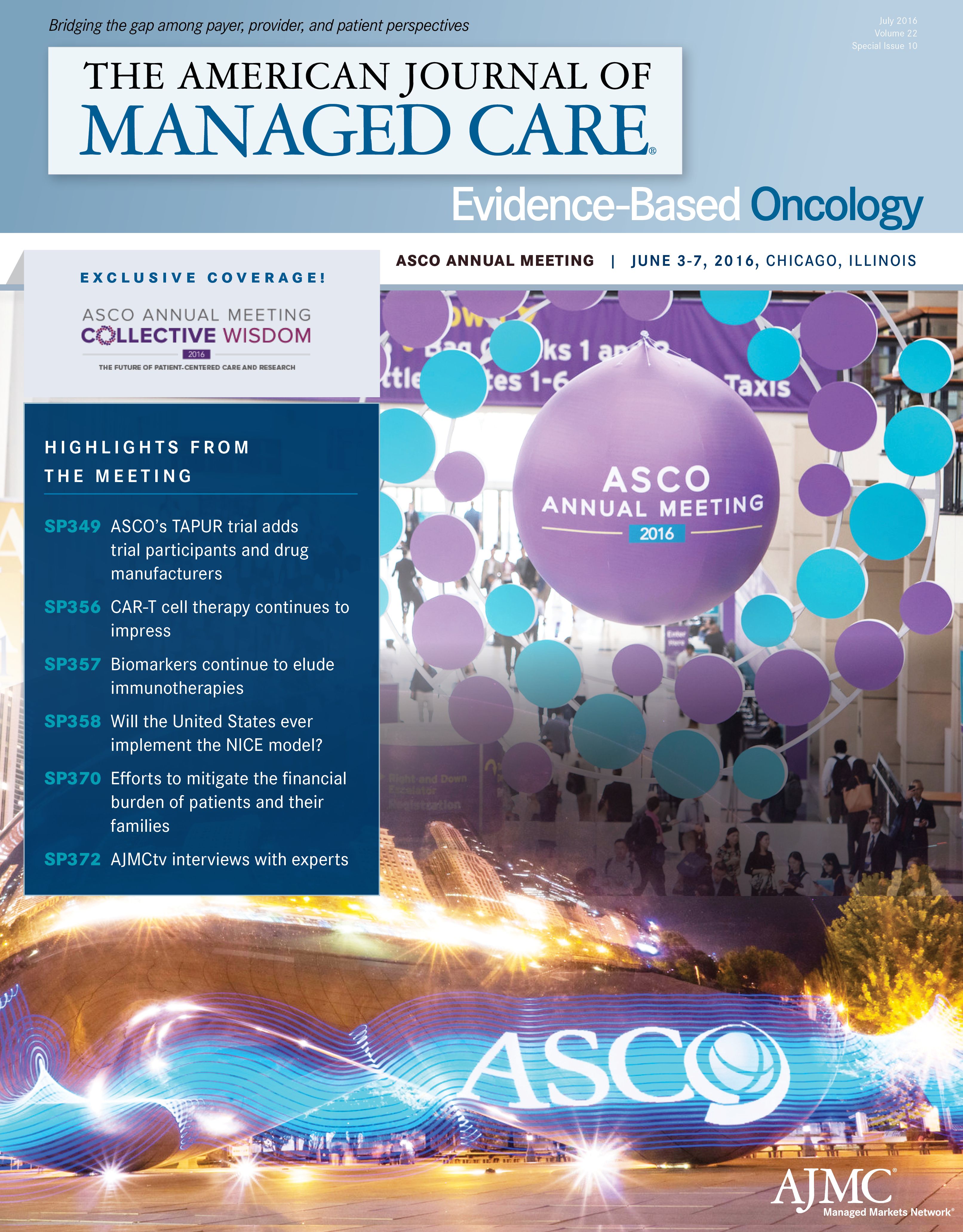Publication
Article
Evidence-Based Oncology
ASCO Study Finds Daratumumab Could Be Economical Over Pomalidomide—Dexamethasone in MM
Author(s):
A poster presented at the annual meeting of the American Society of Clinical Oncology evaluated the cost per median month of survival for daratumumab and other novel treatments for multiple myeloma.
Daratumumab was FDA approved1 late last year for the treatment of patients with multiple myeloma (MM) who had received at least 3 prior lines of therapy, including a proteasome inhibitor (PI) and an immunomodulatory agent (IMiD), or who are double refractory (DR) to a PI and an IMiD. A poster presented at the annual meeting of the American Society of Clinical Oncology evaluated the cost per median month of survival (mOS) for daratumumab and other novel MM treatments.
A team of health economists at Janssen Pharmaceuticals developed a model to estimate the average cost per mOS in patients with MM who either received at least 3 prior lines of treatment or were DR to a PI and an IMiD; received at least 3 prior lines of treatment regardless of DR status; or were DR to a PI and an IMiD regardless of number of prior lines of treatment. Daratumumab, carfilzomib, and pomalidomide+dexamethasone (POM+D) were included in the analysis.2 The time of the study was the duration of overall survival of each therapy.
The drug costs were based on Wholesale Acquisition Costs (WACs), and discounting was not applied for the study. The costs included in the analysis were:
- Drug
- Pre- and postmedication
- Administration
- Monitoring
- Auxiliary
- Adverse events (AEs)
Monitoring, auxiliary, and AE costs were based on Medicare fee schedules and publications. Treatment duration was assumed to be median progression-free survival. The cost per month of mOS was the sum of drug costs, pre- and postmedication costs, administration costs, monitory and auxiliary costs, and AE costs, divided by the mOS in months.
The study found that the mOS for the 3 treatment groups was:
- $4264 for daratumumab
- $4884 (FOCUS trial) and $4213 (PZ-171-003-A1 trial) for carfilzomib
- $5536 for POM+D
The maximum contribution to the monthly cost was the price of the drug, followed by costs to treat AEs or administration costs. Carfilzomib had the lowest drug cost, the study found. Daratumumab had the lowest monitoring and auxiliary costs per month of mOS, and it was also associated with the lowest AEs costs per month. Pomalidomide had the highest monthly costs associated with AEs.
EBO
While a significant drawback of the study is the use of WACs, because they are not an accurate reflection of a drug cost and might actually be an overestimation of the actual cost to payers, this study can be the foundation for designing future economic analyses of treatments for MM.
References
- Dangi-Garimella S. Daratumumab approval yields the first monoclonal antibody, and another option, in multiple myeloma. The American Journal of Managed Care website. http://www.ajmc.com/newsroom/daratumumab-approval-yields-the-first-monoclonal-antibody-and-another-option-in-multiple-myeloma. Published November 16, 2015. Accessed June 22, 2016.
- Maiese EM, Dimova M, Baio G, Makin C. Cost per median overall month of survival in multiple myeloma patients with ≥3 lines of therapy or were double refractory. J Clin Oncol. 2016;34 (suppl; abstract 8057).






